kitchen, not only the heart of the home, but a tidy and efficient organized kitchen can make cooking and socializing much more enjoyable. Here’s a guide to organizing your kitchen with style and functionality.
Understand Your Space and Needs
The first thing is to evaluate the real space of your kitchen. This includes not only the overall size, but also the arrangement of key elements such as countertops, cabinets, appliances, and sink. Understanding the limitations and opportunities of your space will help you maximize its use.
If your space is limited, consider smart solutions like vertical storage, multi-level cabinets, or mobile kitchen islands that can serve as additional workspace. Lighting also plays an important role. The right light can make a small kitchen feel larger and more welcoming.
Thoroughly examining your kitchen is the first step to a successful renovation. By understanding the features and limitations of your space, you can plan a design. That is not only aesthetically pleasing but also functional and efficient.
What type of distribution is most efficient
Efficient zoning in a kitchen is a key strategy to maximize both the functionality and efficiency of the space. It’s about organizing the kitchen into areas dedicated to specific activities, making workflow easier and improving the overall cooking experience.
Preparation Area
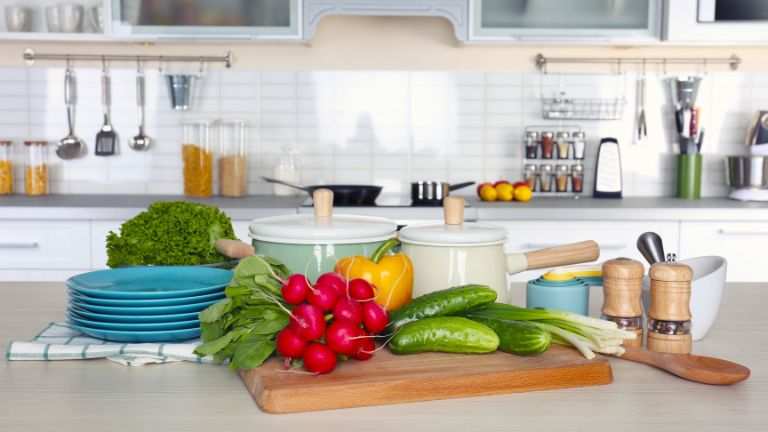
This is the area where food is washed, cut, and prepared. Ideally, it should be close to the refrigerator for easy access to fresh ingredients. The prep area should have a large work surface, such as a countertop, and be equipped with knives, cutting boards, and containers for ingredients.
Cooking Zone
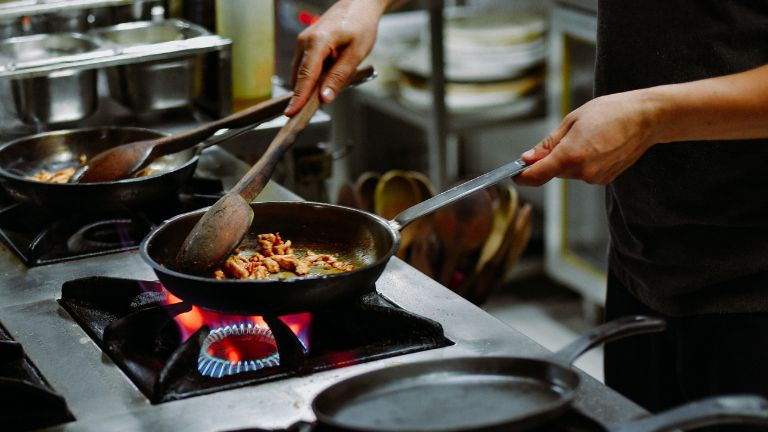
The Cooking Zone, a crucial element in the design of our kitchens, is centered around the key points where cooking takes place: the burners and the oven. This area is dedicated exclusively to food preparation and cooking, and as such, must be efficiently and strategically equipped to maximize functionality and minimize kitchen effort.
To start, it is essential that this area includes a variety of pots and pans, selected based on their frequent use and adaptability to different types of cooking. The diversity of sizes and materials, such as stainless steel, cast iron or non-stick, will facilitate the preparation of a wide range of dishes.
Additionally, essential kitchen utensils should be within easy reach. This includes spatulas, wooden spoons, tongs, ladles, etc.
The proximity of these elements to the cooking area is a crucial aspect. By having pots, pans, utensils and spices nearby, the need for unnecessary travel in the kitchen is significantly reduced, saving time and effort. This focus on movement efficiency is a basic principle in the ergonomic design of our kitchens, ensuring that cooking tasks are performed with greater comfort and less physical effort.
Cleaning Zone

Generally centered around the sink, this area is used to wash dishes, utensils and food. It should include the dishwasher (if available), dish soap, sponges and kitchen cloths. Organizing trash and recycling near this area is also practical.
Food Storage Area
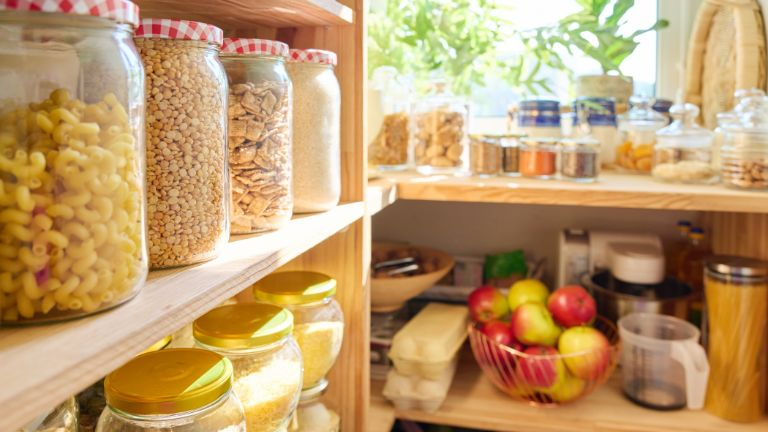
Planning the food storage area in a kitchen involves a detailed and customized approach to ensure functionality and efficiency. This area is essential in the design of any kitchen, as it includes key elements such as the refrigerator and cabinets for storing dry and canned foods.
Refrigerator: The refrigerator should be positioned to provide quick, unobstructed access. An ergonomic design can be considered, where frequently used products are stored at a convenient height, minimizing the need to bend or reach. The interior should be organized efficiently, with areas for different types of food and solutions such as modular containers to maximize space.
Dry and Canned Food Cabinets: Our designs also provide custom storage solutions that optimize every inch of available space. Cabinets should be located near the main work area for easy access during food preparation. The interior design of these cabinets is crucial.
Utensil and Appliance Storage Area
Dedicated to the storage of kitchen utensils, small appliances and other accessories, this area should be arranged to minimize clutter. Items that are used frequently should be accessible, while items that are used occasionally can be stored in less accessible areas.
Dining or Breakfast Area
Including an area for eating or quick breakfasts in the design of a kitchen is a great way to add functionality and comfort to the space, especially if the size of the kitchen allows it. This area should be carefully planned to be practical, welcoming and aesthetically pleasing, fostering an environment where family or guests can gather and enjoy meals in a more casual and relaxed setting.
Choice of Furniture
Depending on the space available and the style of the kitchen, this area may include a small table or a bar. A bar, for example, can be a great option for more compact kitchens, as it takes up less space than a traditional table and can offer additional storage underneath. Folding or extendable tables are smart options for smaller spaces as they can be adjusted as needed.
Comfortable Seats
Seats should be comfortable and functional. In the case of a bar, high stools can be used; for a table, chairs that complement the style of the kitchen. It is important to consider the space available around the seats to ensure there is enough area to move freely.
Strategic Location
Ideally, this area should be located near the preparation area to facilitate food service. This allows for an easy and efficient transition from kitchen to table, which is especially useful during quick breakfasts or when preparing snacks.
Lighting and Decoration
Adequate lighting is key in this area. Warmer, softer light can create a cozy atmosphere. If the dining area is near a window, taking advantage of natural light can be beneficial. Decoration also plays an important role; Choosing colors and textures that complement the rest of the kitchen can create a harmonious and welcoming space.
Additional Functionality
If space allows, you can consider adding outlets near the dining area to facilitate the use of electronic devices or small appliances, such as a coffee maker.
Incorporating an eating area in the kitchen is not only a valuable addition in terms of functionality, but it also provides a social space where family and friends can gather and share moments together. With careful planning, this area can become one of the most used and loved spaces in the home.
Charging Area or Message Center
In many modern homes, the kitchen also acts as a family communication center. A small area with a bulletin board, space to charge mobile devices, or even a small desk for quick tasks can be very helpful.
Maximize Vertical Storage
Taking advantage of vertical space is a smart and efficient design technique, especially in kitchens where floor space may be limited. Using walls for storage and organization not only saves valuable space, but also makes it easier to access kitchen utensils and equipment. Here are some tips to maximize the use of vertical space in a kitchen:
Open Shelving
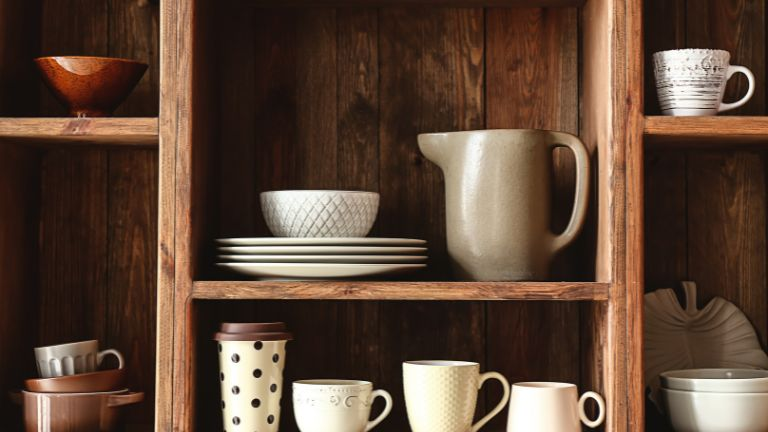
Installing open shelving is a great way to utilize wall space. These shelves can be used to store a variety of items, such as plates, mugs, storage containers, and decorative items. The advantage of open shelving is that it makes items visible and easily accessible. Additionally, they offer the opportunity to display your tableware and other kitchen accessories, contributing to the style and personality of your kitchen.
Hooks for Hanging Utensils and Pots
Installing a bar with hooks on the wall or over the kitchen island provides a convenient place to hang utensils, pots and pans. This solution not only saves space in cabinets and drawers, but also puts these items within easy reach, making them more accessible while cooking. Additionally, hanging pots and pans can add a touch of industrial or rustic style to your kitchen, depending on the design of the utensils.
Wall Mounted Storage Systems
There are modular wall-mounted storage systems that can be configured to the specific needs of your kitchen. These systems can include shelves, baskets, and bars, providing versatile storage for a wide range of items.
Use of Space Above Cabinets
If there is space between the cabinets and the ceiling, this can be an ideal place to store less frequently used items. Decorative boxes or baskets can be an aesthetic solution for this type of storage.
Wall Organizers
For smaller items, such as spices or cups, specific wall organizers can be used. These organizers help keep the kitchen tidy and free up space on counters and cabinets.
When utilizing vertical space, it is important to maintain a balance between functionality and aesthetics. Too many items on the walls can make a kitchen feel cluttered. Selecting and arranging items carefully can help keep a organized kitchen, functional and visually appealing.
Smart Storage Solutions
Investing in drawer organizers, dividers, and removable shelves is a smart strategy to maximize space and maintain order in kitchen cabinets and drawers. These storage solutions can transform cluttered cabinets and drawers into highly functional and efficient spaces, making it easy to access items and keeping everything organized.
Drawer Organizers
These are ideal for dividing drawer space and keeping items separate and organized. They can be used for kitchen utensils, cutlery, small tools, or even non-kitchen related items such as office devices or craft supplies. Drawer organizers come in different materials, such as wood, plastic, or metal, and can have different sized compartments to fit various types of items.
Dividers
Dividers are useful in larger cabinets and drawers. They allow space to be segmented for different types of kitchen utensils, such as pans, lids, plates and bowls. Some dividers are adjustable, making them versatile to fit different sizes and shapes of items.
Removable Shelves
Removable shelves in cabinets are extremely useful, especially for those located in the lower part of the kitchen. They allow easy access to items that would otherwise be at the back of the closet, reducing the need to bend over or fumble. These shelves are ideal for pots, pans, small appliances, and other heavier kitchen items.
Use of Internal Vertical Spaces
Additionally, you can take advantage of the vertical space inside the cabinets by using stackable shelves or shelf inserts. This allows more items to be stored in the same space, optimizing vertical storage.
Customization according to Needs
When choosing these organizers, it is important to consider the specific needs of your kitchen. For example, if you cook frequently, you might need easy access to your utensils and spices, while if you bake a lot, you might need more space to store baking pans and containers.
Keep the countertop clear
Maintaining a tidy and organized kitchen is essential for an efficient and enjoyable cooking experience. A key aspect of this order is the proper management of small appliances and the smart organization of kitchen essentials.
Small appliances that are not used daily, such as blenders, food processors, or coffee machines, can take up valuable counter space. Storing these appliances in cabinets or shelves when not in use helps keep work surfaces clear and ready for use. If space allows, allocate a specific cabinet or area in your kitchen to store these appliances. This not only frees up counter space, but also keeps the kitchen visually tidy and larger.
Use Containers and Labels
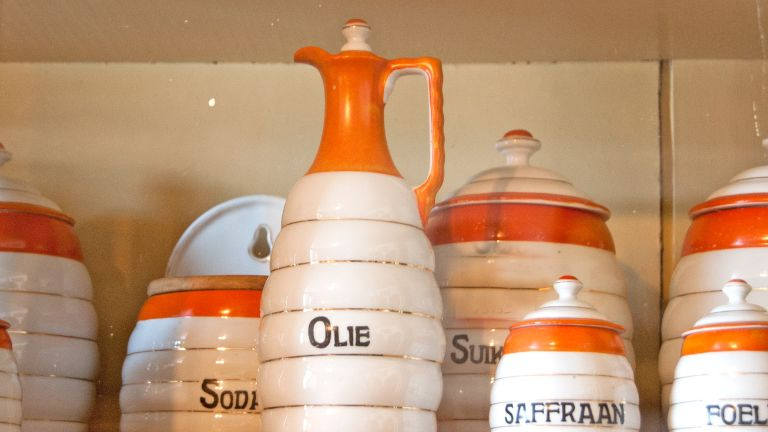
Store dry foods like pasta, rice, and cereals in clear, labeled containers. This not only keeps food fresh, but also makes it easy to identify and provides a clean, organized look.
Consider using vases, ceramic jars, or stainless steel containers to store spatulas, wooden spoons, and other utensils. This keeps them organized and within reach, while adding a decorative touch to your kitchen.
Spice racks, magnetic jars, or dedicated drawers with special inserts are great for keeping spices organized and accessible. Opting for uniform containers and clearly labeling them not only makes identification easier, but also improves the overall aesthetic of the kitchen.
Incorporate Decorative Elements
Incorporating decorative elements in the kitchen can make a big difference in the atmosphere and aesthetics of this important space in our home. They not only add visual beauty, but can also reflect our personality and style. Decorative elements, such as paintings, plants, curtains or kitchen accessories, can add color, texture and style to the kitchen. This helps create a pleasant and welcoming environment where we can enjoy our meals.
Some decorative elements, such as shelves or decorative baskets, can help us keep the organized kitchen. Not only are they functional, but they also add an aesthetic touch while helping us keep everything in its place.
Effective Lighting
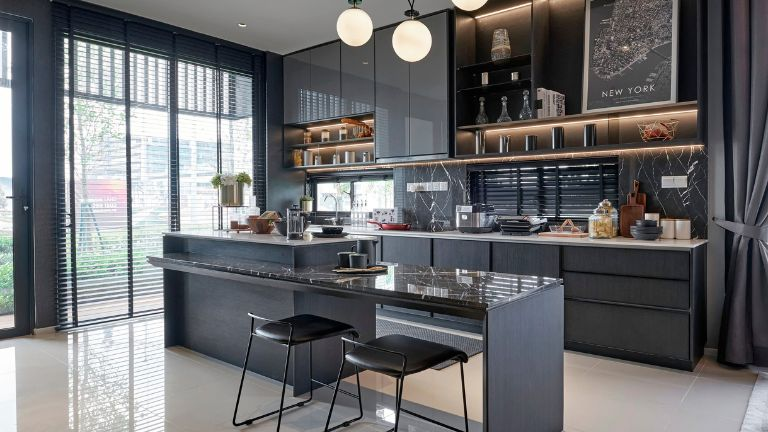
Lighting in the kitchen is crucial for several reasons. Firstly, good lighting makes food preparation easier by providing a clear view of what you are doing. Additionally, adequate lighting can improve safety by reducing the risk of cuts and burns. It can also influence the perception of flavor and presentation of dishes. Finally, well-designed lighting can enhance the ambience and aesthetics of the kitchen, making it a cozy and pleasant place to spend time with family or friends.
Colors and Textures
Colors and textures are key elements in kitchen decoration, as they can influence the atmosphere, style and functionality of this space.
- Neutral colors: Neutral colors such as white, gray and beige are very popular in the kitchen, as they provide a feeling of cleanliness and spaciousness. Plus, they are easy to combine with other colors and styles.
- Vibrant colors: If you want to add energy and vitality to your kitchen, you can opt for vibrant colors such as red, yellow or green.
- Warm colors: Warm colors such as orange, brown or gold can create a cozy and homey atmosphere in the kitchen. You can use them on walls, furniture or accessories to add warmth to the space.
- Smooth surfaces: Smooth surfaces such as stainless steel or glass are ideal for a modern and minimalist kitchen. These textures provide a clean and elegant look, as well as being easy to clean.
- Natural textures: If you prefer a more rustic or natural style, you can incorporate textures such as wood, stone or brick. These materials add warmth and an organic touch to the kitchen.
- Soft textures: To create a feeling of comfort and comfort, you can use soft textiles such as curtains, rugs or cushions. These textures add warmth and help absorb sound in the kitchen.
It is important to keep in mind that the choice of colors and textures should be in harmony with the general style of the kitchen and with your own tastes and preferences.
Flexibility and Adaptability
Finally, keeping your kitchen adaptable is essential, as needs and preferences can change over time. Choosing solutions is key to a functional kitchen in the long term.
Organizing a kitchen isn’t just about maximizing space, it’s also about creating a balance between functionality and style. A place where cooking and enjoying time with family and friends becomes a truly rewarding experience. Happy organizing!
